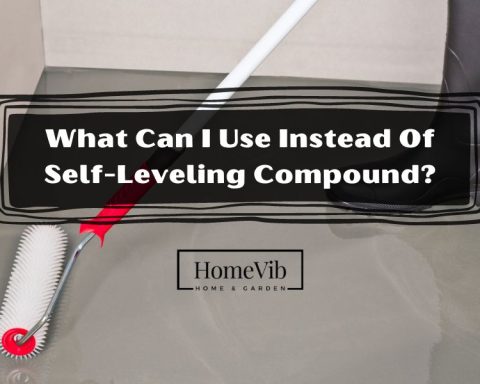To level a sloping concrete floor, you must first determine where the slope is and remove its outer layer. This is done to redo the tiles or cement and reverse the slope.
Leveling uneven floors is sometimes done when you renovate your house, turn something into a living space, or the uneven curves bother you.
Why Does My Concrete Floor Slope?
I can no longer close my windows and doors all the way. The trims around my room are not uniform anymore. Does my concrete floor slope? What does this mean?
Although a sloping floor is a common construction problem, there can be a severe issue of structural damage behind it. Sloping floors may occur for several reasons.
These are the most typical causes of floor sloping:
Windows And Door Frames Losing Structural Integrity
An entire floor can lose integrity over time resulting in weak window frames and jammed doors. A structure that can no longer support weight and force will cause the floor above them to sag.
Water Damages
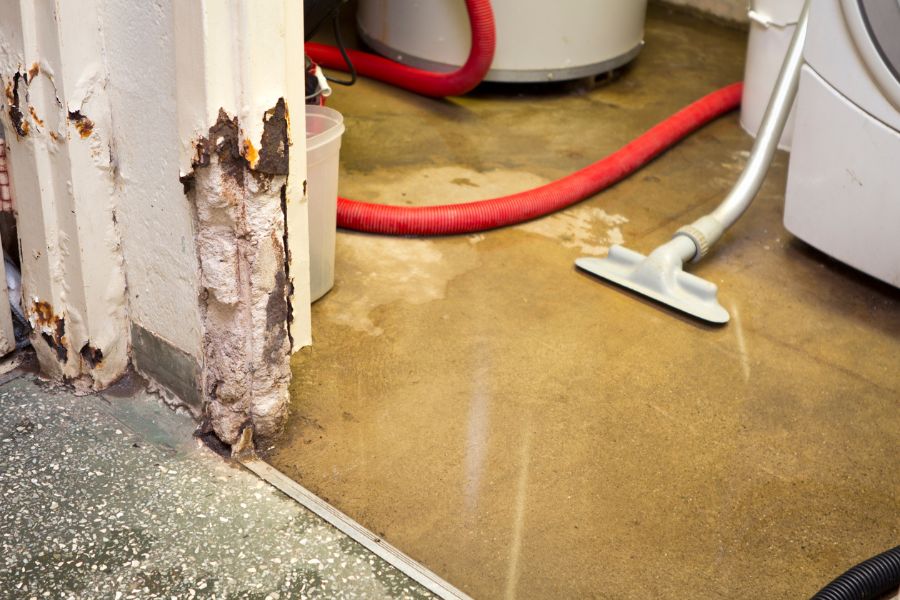
Cracks that develop in your ceilings and walls may open up for water damage. Groundwater rises and infiltrates the breaks in your house’s premises.
When water leaks, it finds its way into the rot wood or cracks and damages the floor joints. The floor unevenness starts and becomes more sag when the support beams that hold your floor receive leaks over time.
Natural Forces Shift a Home’s Original Foundation
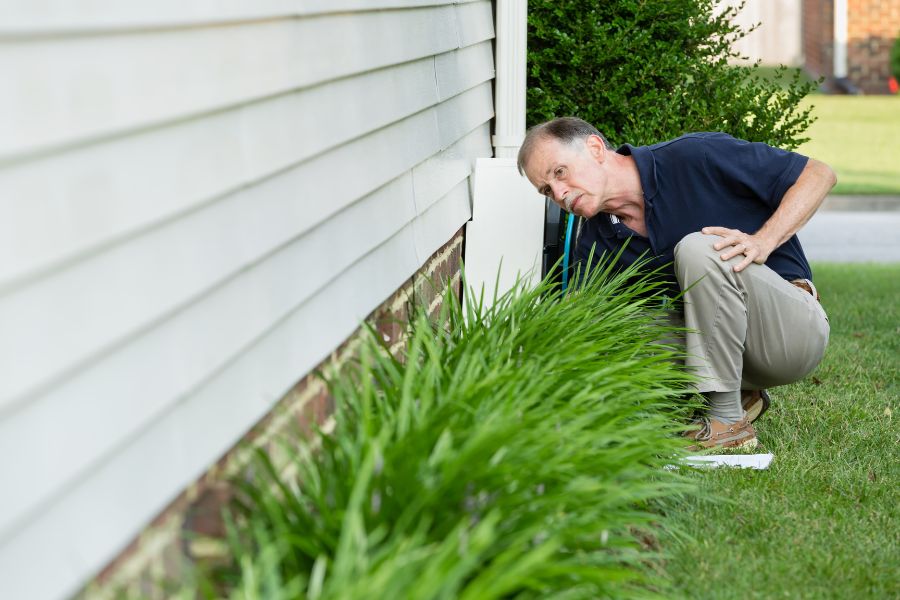
House settling is particularly in older homes. This happens over time when the house moderately sinks into the ground.
A building will slowly creep into the earth as the soil beneath its foundation moves. The problem with this natural shifting is that the ground sinks at different rates.
Gaps between windows, doors, and walls were because irregular movements can result in significant disfigurement to a home’s foundation.
Faulty Construction
Malfunctioned foundation from a construction job can be why your floor is uneven. Your contractor’s job to build your home’s floors and foundation must be adequate to support the structure’s deterioration.
During the construction period, you have to ensure that your floor joists are correctly installed and the woods used are the standards that do not weaken over time.
It’s best to consider an inspection to confirm your hunch about your slanted floors.
Can I Level a Concrete Floor Myself?
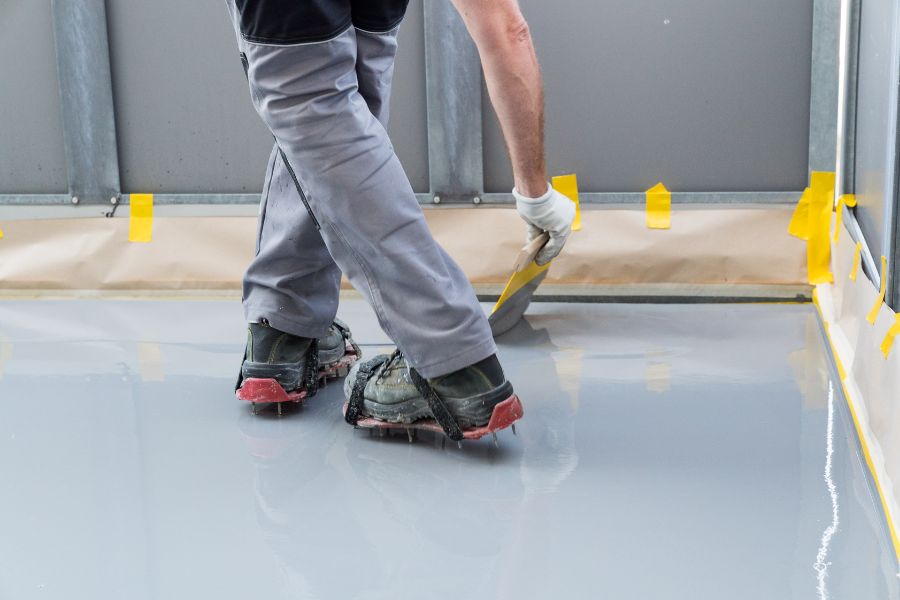
Joist repairs and floor restoration must be done carefully. This is to avoid further problems that can harm the support of your house.
Professional examination is the best option, but it is possible if you think you will run out of budget or want to do the work alone. There are lots of DIY self-leveling compounds that are made available for this exact purpose.
What Is the Cheapest Way To Level a Concrete Floor?
The self-leveling compound is often used on floors that are not leveled perfectly. It can be an alternative to traditional leveling methods but is more expensive because it needs more specialized ingredients and equipment.
These are the three least expensive alternative ways to smoothen your surface level.
-
Concrete Grinding Wheels
A sandpaper or grinding pad can make your floor consistent manually, but it will require more time and effort. Be sure to go slowly and equally to prevent any bumps or dips in the flooring.
-
Mixed Compound
Another choice is to use a leveling compound that contains Portland cement. Mix this compound with water to create a suspension to spread over the floor and level it out. The setting time is longer than a self-leveling compound, but the price you will save is worth it.
Get Self-Drying Cement on Amazon.
-
Sand Mix
Sand blends bind a material to adhere, spread, and prevent excessive shrinking. Make a flat and smooth surface with a quality sand mix. Take note: Use the right combination of sand mix to make the concrete stronger. Spread and balance the mixture between the gaps and wrinkles on your floor.
What Is the Easiest Way To Level a Concrete Floor?
The easiest way to address a sloping floor is with a few packs of self-leveling floor mix. It is also known as floor resurfacer or liquid floor underlayment. Self-leveling concrete is designed to dry very fast. The proper water ratio and a self-leveling compound according to the instructions indicated in its packaging.
You can use a drill to mix it until the consistency is dense enough to pour. Apply it on the sloping concrete floor and cover them completely. Spread the edges and corners evenly using a leveler bar, wiper, or sponge.
Usually, after applying, it will take 20 minutes to begin hardening and then 48 hours to surely dry it. If you plan to install tiles or any hard-surfaced flooring on top, make sure it is dry enough to walk on.
You will need a concrete bonding agent for the self-leveling compound to stick. Prepare it according to the manufacturer’s instructions and apply a paint roller evenly across the floor.
How Can I Level a Very Uneven Concrete Floor?
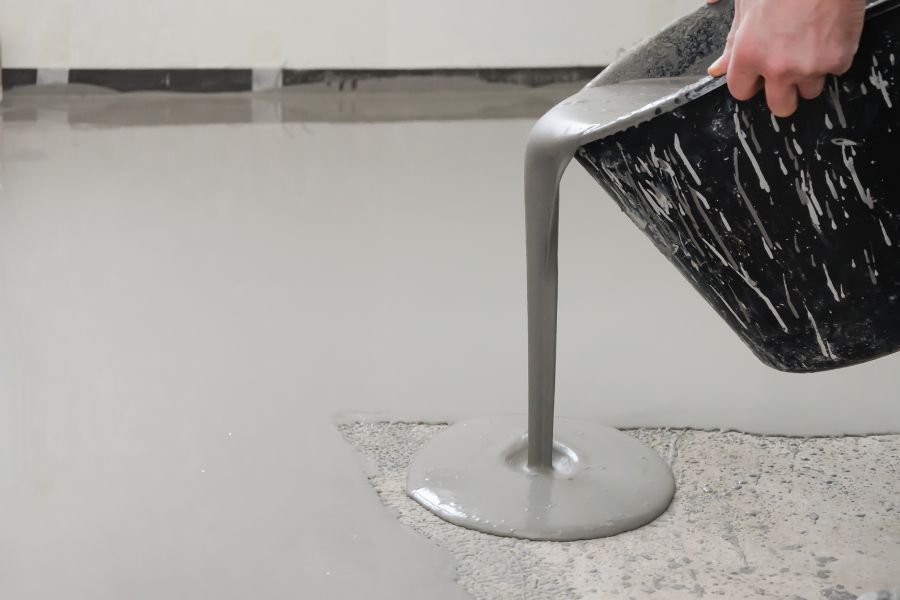
Most of the steps and materials needed to level a sloped floor depend on its cause and imperfections. Self-leveling underlayment is the standard, but it becomes more challenging in more extensive areas requiring more work for a very uneven concrete floor.
If no one is an expert with self-leveling concrete, I recommend more than five people for this task. The differences in the height of the surface need self-leveling concrete with a longer drying time.
Put temporary borders if you are breaking the job up into sections. Plan the job with all the materials needed. You will need these tools for a self-leveling job:
- buckets
- heavy-duty power drills with blades
- self-leveling concrete
Is It Cheaper To Level Concrete Or Replace It?
Leveling concrete or replacing it is both inconvenient and expensive. If you are busy, the charges for a concrete replacement in time and money are significant.
You have to dig up and use machinery. But in major cases, replacement is not needed. For me, concrete leveling and lifting are better, and here are the two most important reasons.
-
Time-Saving
Installing new concrete to level your floor is a complicated process. You must prepare the soil and pour new slabs, which can take many days for your space to be functional again. A typical replacement of a driveway requires a minimum of four days. While raising and lifting concrete will usually take two days.
-
Cheaper
Replacing concrete usually costs twice or more than repairing and leveling. Total replacement is expensive labor and requires skilled workers. The most significant advantage is 50% to 80% less than the replacement cost.
What Is the Maximum Thickness For Self-Leveling Concrete?
So, you want to level your concrete floor, and you have to follow a certain level of thickness to be successful. You can make self-leveling concrete up to 1.97 inches thick if you need a broader base and use multiple layers to cure in-between applications.
It is better to use thinner layers when using self-leveling concrete on counterparts. One layer that is about 0.38 inches thick is sufficient.
On the other hand, the Floor resurfacer needs thicker layers to account for shrinkage. It should be at least 0.25 inches to 1.5 inches thick.
The approximate mixture of self-leveling concrete to achieve the right thickness is 5 quarts of clean potable water per 50 lb.
Is Concrete Leveling Permanent?
Make sure to invest in a concrete repair and leveling that will put sunken concrete in its proper place. Even though a lifted concrete won’t last forever, it will still last long when the leveling is done correctly. Concrete leveling lifespan can be permanent and last for the life of the concrete itself.








